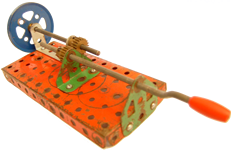| Using physics to produce a 3D animation | This uses the information from the physics pages to show practical algorithm to simulate a solid physical object by using discreet step integration |
| Storing physics information |
How do we store this information, this page discusses two options:
|
| Keyframing | This page shows how to specify movement as a sequence of static 3D models. |
| Motion Capture | This page shows how to capture keyframe information from live action |
| Particles | This page talks about particle systems and how they can be used for special effects and to model smoke, gases and fluids |
| Collision Detection | This page talks about how to detect collisions between solid objects. Collision response, what happens after the collision, is covered in the physics section. |
| Example | As an example this shows how to animate a model of a hand. |
| h-anim (human animation) | Shows how to generate a h-anim model |
These pages aim to show how 3D models can be
animated.
